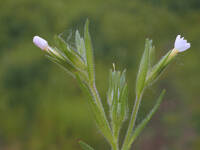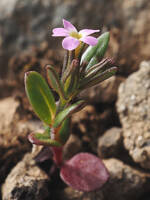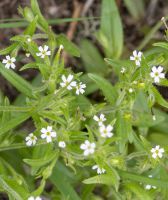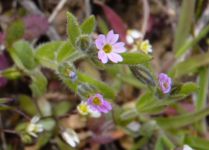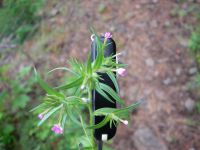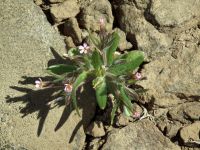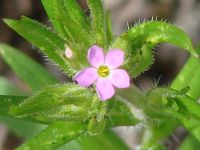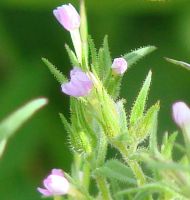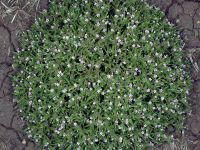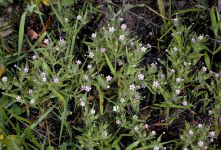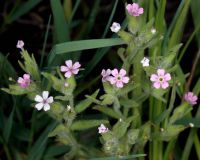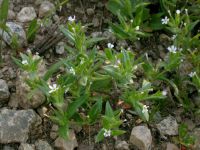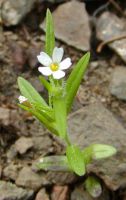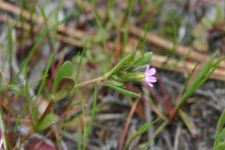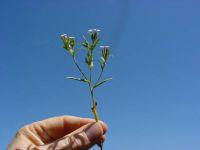Distribution: Occurring on both sides of the Cascades crest in Washington, though more common east of the crest; Alaska to California, east to the Rocky Mountains and Great Plains.
Habitat: Lowlands and foothills in open, dry to moderately moist places.
Flowers: March-June
Origin: Native
Growth Duration: Annual
Conservation Status: Not of concern
Pollination: Self-pollination, bees, flies
Simple to multi-branched, taprooted annual to 30 cm. tall. Plants hairy to hairy-glandular, at least on the upper half. Highly variable in appearance.
Lower leaves opposite, upper leaves alternate. Leaves linear to elliptic in shape, to 5 cm. long. and 8 mm. wide.
Usually in pairs at the tips of stems and branches. One flower often attached by a slender stalk (pedicel), the other attached nearly directly to the stem or branch (subsessile). Each 5-15 mm. long flower composed of a fused tube that is white or yellowish, with 5 lavender to pink lobes that are separate from each other.
Capsule.
Publication: Pittonia 3: 300. 1898.
Gilia gracilis Hook. var. humilior (Hook.) H. St. John
Microsteris gracilis (Hook.) Greene ssp. humilis (Greene) Brand
Microsteris gracilis (Hook.) Greene var. gracilis [HC, IMF4]
Microsteris gracilis (Hook.) Greene var. humilior (Hook.) Cronquist [HC, IMF4]
Microsteris humilis Greene
Microsteris micrantha (Kellogg) Greene
Phlox gracilis (Hook.) Greene
Phlox gracilis (Hook.) Greene ssp. gracilis [KZ99, JPM]
Phlox gracilis (Hook.) Greene ssp. humilis (Greene) H. Mason [KZ99]
Phlox gracilis (Hook.) Greene var. humilior (Hook.) B. Boivin
PNW Herbaria: Specimen records of Microsteris gracilis in the Consortium of Pacific Northwest Herbaria database
WA Flora Checklist: Microsteris gracilis checklist entry
OregonFlora: Microsteris gracilis information
E-Flora BC: Microsteris gracilis atlas page
CalPhotos: Microsteris gracilis photos




